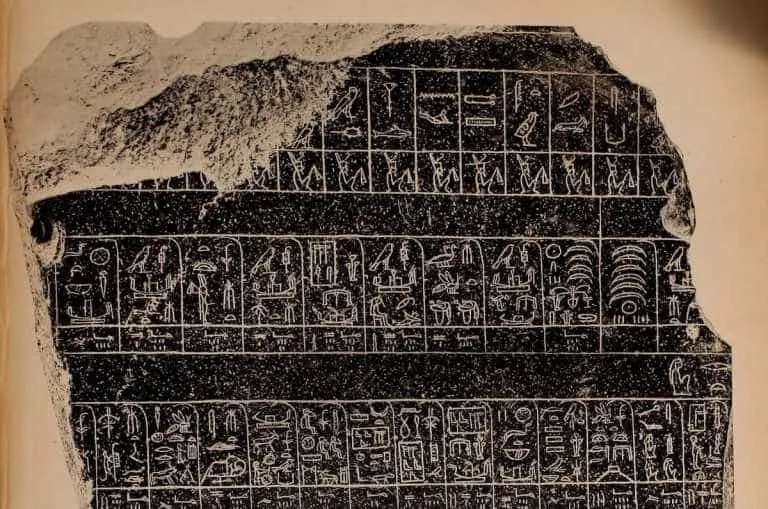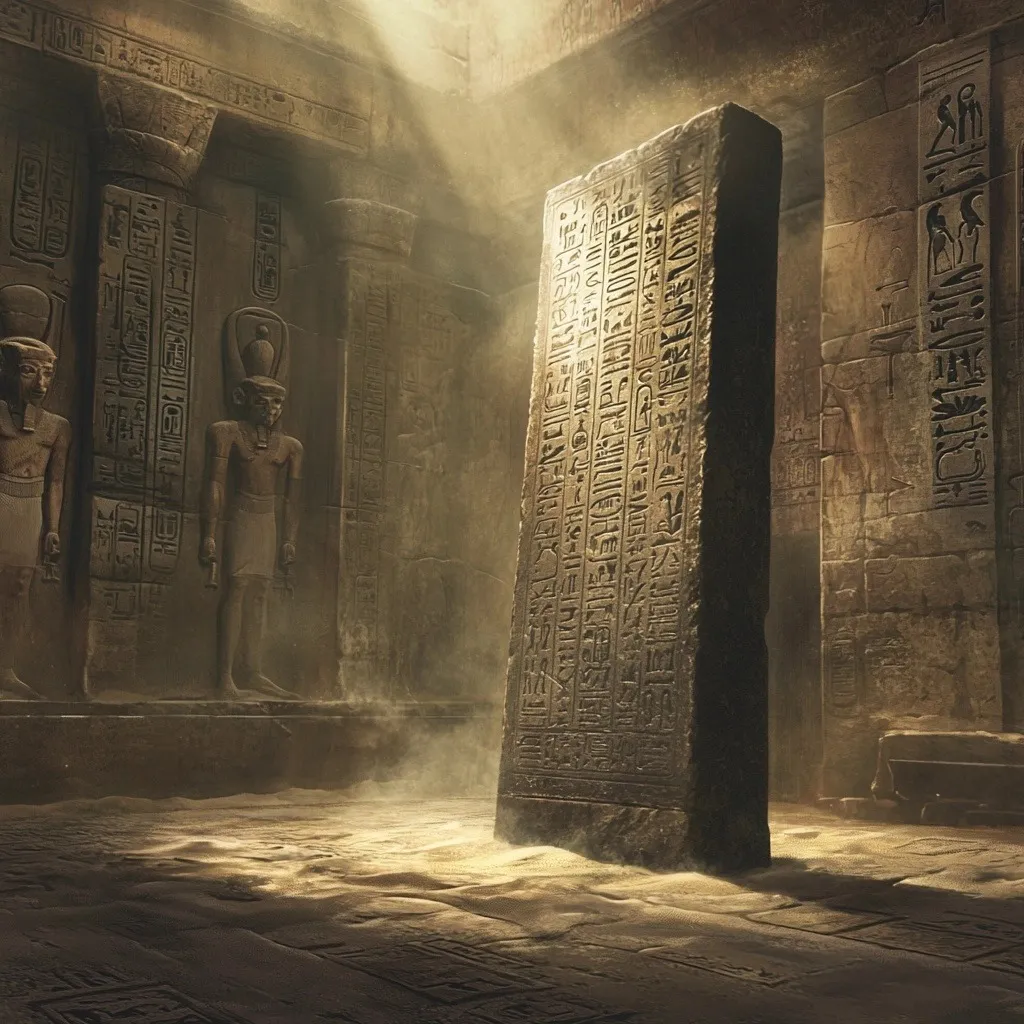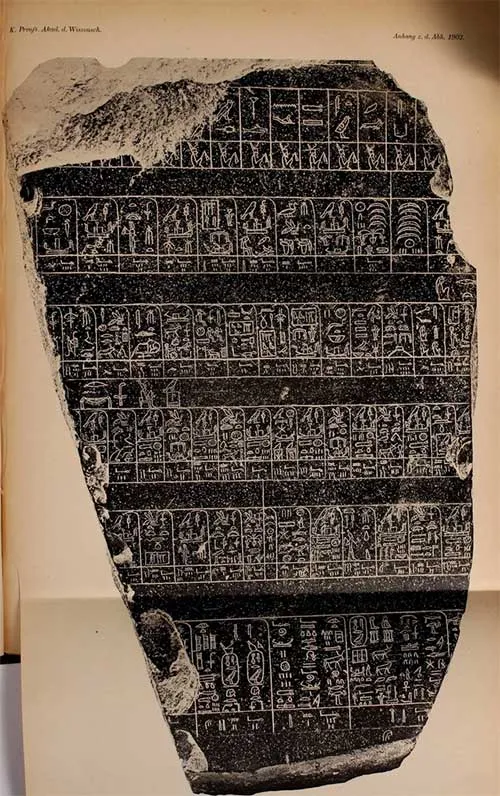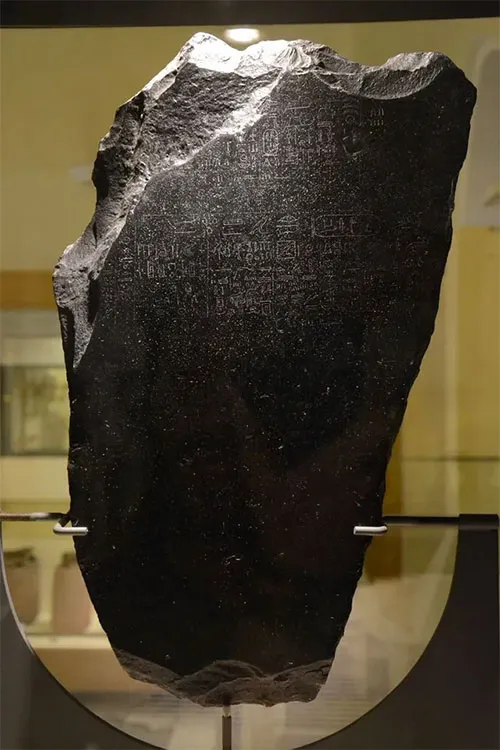El misterio de la Piedra de Palermo: ¿Evidencias de antiguos astronautas en Egipto?
Actualmente, los científicos no han podido encontrar todos los fragmentos de la losa de piedra de Palermo para ensamblarlos en un artefacto completo, por lo que descifrar el misterio es difícil.
La gente ha estado fascinada durante mucho tiempo con la idea de que en un pasado lejano, civilizaciones extraterrestres avanzadas visitaron la Tierra y ayudaron a la humanidad a iniciar el desarrollo en nuestro planeta. Sin embargo, esta idea ha sido firmemente rechazada por muchos que creen que no sucedió, aunque hay muchos descubrimientos que apuntan a una parte muy diferente de la historia de la humanidad, parece todo lo contrario con la ciencia convencional.
Se han citado muchos textos, pinturas y monumentos antiguos como evidencia que respalda la teoría de la astronáutica antigua. Sin embargo, millones de personas más siguen abiertas e ignoran la posibilidad de que no seamos la primera civilización que considera hogar al planeta Tierra.
Uno de ellos es la Piedra de Palermo , uno de los siete fragmentos supervivientes de una estela de los Anales Reales del período del Reino Antiguo de la historia del antiguo Egipto. Esta también se considera una de las fuentes más importantes de artefactos para estudiar la civilización del antiguo Egipto y su larga historia en la Tierra.
Aunque la fecha exacta y quién creó la Piedra de Palermo sigue siendo un misterio para los estudiosos, la fecha más aceptada es que apareció durante el Reino Antiguo , 2000 siglo XXI a.C.
Lo que hace que esta tablilla sea tan especial es que, entre otros textos antiguos similares, la Piedra de Palermo enumera a los reyes anteriores del antiguo Egipto y a los faraones que gobernaron Egipto durante sus primeras cinco dinastías. La parte más controvertida de la Piedra de Palermo son los reyes predinásticos, que no parecen haber sido humanos, eran misteriosos “dioses” y “semidioses” .
La Piedra de Palermo o Estela de Palermo es uno de los siete fragmentos supervivientes de una estela de la Crónica Real del período del Reino Antiguo en la historia del antiguo Egipto. Esta estela enumera los reyes que gobernaron Egipto desde la Primera Dinastía hasta el comienzo de la Quinta Dinastía y registra acontecimientos importantes durante cada uno de sus reinados. Las crónicas reales probablemente se registraron durante los años de la V Dinastía.
El documento, escrito en jeroglíficos, habla de 120 reyes que gobernaron antes de que los antiguos egipcios existieran oficialmente como civilización. Curiosamente, los nombres de misteriosos “dioses” y “semidioses ” también aparecen en las genealogías de la familia real egipcia. Además, la Piedra de Palermo también tiene similitudes con la Lista de Reyes de Turín y la Lista de Reyes Sumerios , las cuales se refieren al período en el que los dioses vivieron en la Tierra y han gobernado durante cientos, incluso miles de años.
La Lista de Reyes Sumerios es uno de los textos antiguos más notables descubiertos en la Tierra y describe con precisión a los gobernantes de la antigua civilización de Sumeria. En la lista del rey de Sumeria hay un pasaje: “…Después que la realeza descendió del cielo, reinando en Eridug. El dios Alulim se convirtió en rey durante 28.800 años. Alaljar gobernó durante 36.000 años. Estos dos reyes gobernaron y reinaron durante 64.800 años”.
Y en la Lista de Reyes de Turín, el texto antiguo describe los largos reinados de los dioses, escrito en papiro de Turín en lengua monje (una antigua forma de escritura jeroglífica de los monjes de Ai en Egipto). Los eruditos creen que el papiro original era una lista de más de 300 nombres con fechas específicas de reyes que ascendieron al trono para gobernar el antiguo Egipto. En particular, la lista de reyes sumerios está registrada con precisión en las dos últimas filas de columnas.
Presenta un resumen de todo el texto, mencionando la lista de reyes sumerios, con el pasaje: “…El rey Shemsu-Hor, reinó 13.420 años. El rey Shemsu-Hor reinó 23.200 años. Un total de 2 reyes gobernaron 36.620 años”. Además, la lista del papiro de Turín también muestra claramente que 9 dinastías gobernaron Egipto antes de la época de los faraones e incluían reyes respetables: Menfis, el Norte, Shemsu Hor, Horus, que gobernó hasta la época de Mene, el primero del Antiguo Egipto.
Este antiguo texto describe una época misteriosa en la Tierra en la que los humanos “podían” vivir durante miles de años y gobernar vastos territorios antiguos.
Además de la información anterior, la Crónica Real también enumera otra información interesante sobre los impuestos en el antiguo Egipto, las ceremonias religiosas, el nivel del agua del Nilo y las campañas militares, así como otros detalles importantes. Más importante aún, se considera una de las principales fuentes a partir de las cuales Manetón, un historiador egipcio, recopiló documentos históricos sobre el antiguo Egipto.
Manetón es famoso por su obra “Aegyptiaca”, en la que dividió a los gobernantes del antiguo Egipto en dinastías, lo que finalmente condujo a la formación del sistema utilizado para datar la historia del Antiguo Egipto.
La Losa de Palermo está hecha de basalto negro y se cree que tenía unos 2 metros de altura cuando se completó. Sin embargo, lo que encontramos hoy son sólo fragmentos, hasta el momento no hemos podido encontrar piezas completas de esta piedra.
Varios textos antiguos describen con precisión el período en el que nació y los reyes eran como dioses que descendían del cielo para gobernar a la humanidad. Además, estos dioses están presentes en todas las civilizaciones antiguas de la Tierra. Por alguna razón, los investigadores ignoraron estos textos antiguos y crearon sus propias crónicas del antiguo Egipto y otras civilizaciones. No pueden explicar ni probar: ¿Por qué los reyes gobiernan durante miles de años? ¿Los reyes longevos son de otros planetas?
La Piedra de Palermo ha ayudado a los investigadores a concluir que los antiguos egipcios desarrollaron una tecnología superior para fundir el bronce, lo que finalmente les permitió crear las increíbles estatuas de bronce que existieron durante la Segunda Dinastía.
La Piedra de Palermo también registra la construcción del primer edificio de piedra durante el reinado de Neka, antes de la pirámide escalonada de Zoser.
Como puede ver, hay una serie de textos antiguos que describen con mucha precisión una época en la que seres misteriosos, posiblemente dioses, vinieron del espacio y gobernaron a la humanidad durante un largo período de tiempo. Por otro lado, se pueden encontrar relatos similares de “dioses” que descienden de los cielos en muchas culturas antiguas de todo el mundo. Es por eso que mucha gente cree que la Piedra de Palermo es uno de los textos antiguos importantes que demuestra que seres de otro mundo alguna vez gobernaron nuestro planeta y viajaron por el espacio antiguo.
Otra hipótesis mundial
Una opinión es que la piedra de Palermo puede provenir de otro mundo. Los viajeros espaciales llevaron este artefacto a Egipto y lo dejaron atrás. Si esto es cierto, viajar a través del espacio y el tiempo es completamente posible.
Sin embargo, todavía no sabemos cómo se realiza este viaje. Por tanto, la comunidad científica sigue descifrando activamente el misterio de la piedra de Palermo.
- China encuentra una tecnología sin precedentes para separar agua y sal con una pureza de hasta el 99,9%
- Un animal desaparecido desde hace 40 años “reaparece” de repente: ¡en lugar de estar feliz, el científico tiene miedo!
- En la Tierra, una brújula siempre apunta al Norte, pero cuando se la lleva al espacio, ¿hacia dónde apuntará?
Related Post
They descended from heaven and ruled Egypt for 36,000 years, ancient papirs reveal.
Puente micénico de 3,300 años de antigüedad todavía en uso hoy: una maravilla de la ingeniería antigua
Puente micénico de 3,300 años de antigüedad todavía en uso hoy: una maravilla de la ingeniería antigua
Descubrimientos impactantes: descubrir los misterios de la historia humana y el pasado
El misterio del “reloj de pulsera” sumerio: revelando la verdad detrás de las antiguas tallas
Los sumerios construyeron este ‘dispositivo anti-armagedón’ hace 4.000 años; todavía sorprende a los científicos







